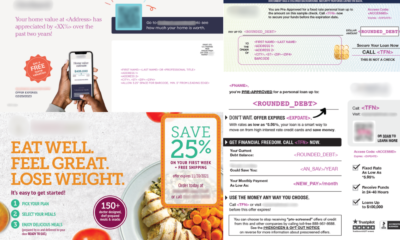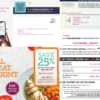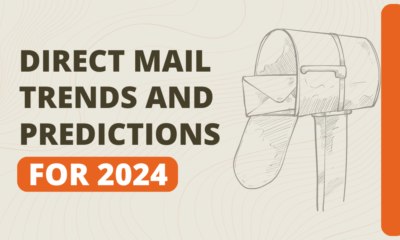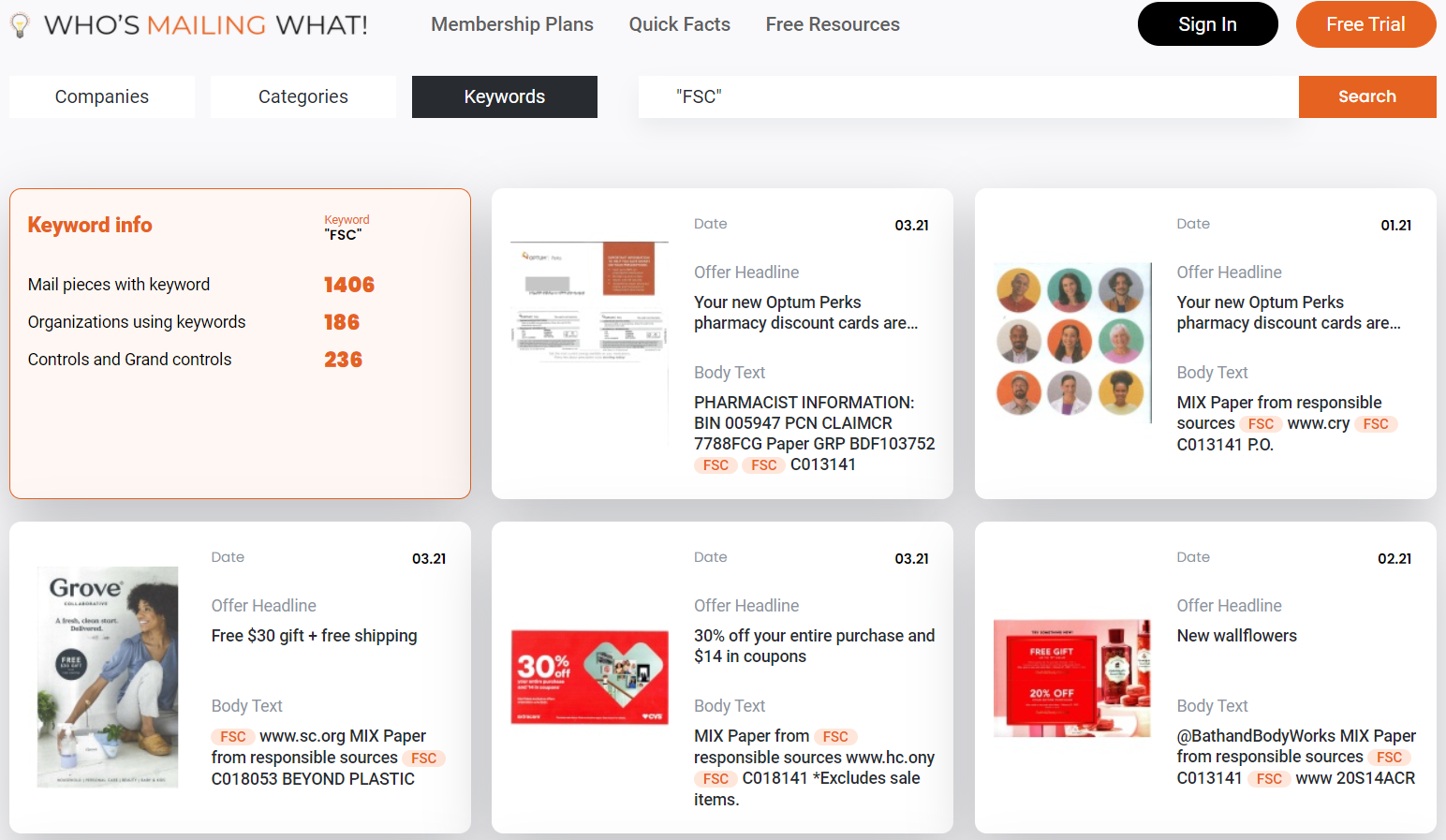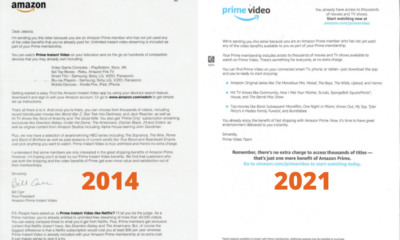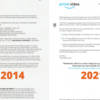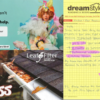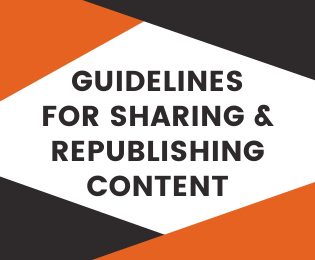RESEARCH & REPORTS
Eco-Friendly Trends in Direct Mail
In this article, we look at how ecological messages in direct mail have become more common over the last 20 years.
As we mark this year’s Earth Day (April 22), it’s the perfect time to look at how ecological messages in direct mail have become more common over the last 20 years.
We’ll get into our breakdown of specific sustainability trends below. But it’s important to recognize that mail has faced criticism for years as “junk” or a waste of resources. We’ve all heard that before, right?
However, that may not be as much a concern as it was just a few years ago.
Consumers have access to more information now than ever before about the environmental impact of their everyday actions. Whether it’s the packaging of the stuff they order, the vehicle that they drive, or the type of food they get at the supermarket, they want to know and even expect that brands will care about the same values. The same is true of direct mail.
Why Is Direct Mail Sustainability Trending?
As we’ll see in the analysis sections, sustainability issues and terminology have been trending upward in direct mail marketing over the last 20 years. Some, in particular, have seen sharp increases just in the last 5 years.
But why? Why is it so important for companies and nonprofits to use space on their direct mail to talk about their environmental practices?
Here are some good reasons.
- Companies actually care. Many want to lessen their environmental impact. After all, companies are made up of people — people who recognize the dangers in continued wasteful, damaging, or unsustainable practices.
- Companies want to be seen as good citizens. Corporate responsibility can take many forms and enhance their brand image. When consumers see these green messages and logos, they place more trust and credibility in the company. Therefore, they’re more likely to buy from them. Symbols and reminder messages also educate confused or forgetful customers.
- Companies think it’s good for business. Yes, there’s value in polishing your image by being regarded as a “green” or sustainable company. But in a lot of cases, these practices are also good for the bottom line, especially in the long term. Reducing or eliminating inefficiencies and wasteful steps saves money. Also, many brands with a reputation or proven history of green products and services inspire customer loyalty.
- Companies want to be on the right side of history. Environmental and sustainability challenges, according to surveys, are especially important to Millennials and Generation Z. Companies that speak to them will be more successful as their economic (i.e., shopping) power grows.
Trends in Green Terms in Direct Mail from 2000-2021
Our analysis of direct mail collected by Who’s Mailing What! covering the last 20 years shows that mailers are increasingly including environmental marketing claims as well as terminology. We looked at the growth of specific words, phrases, or terms overall in the mail, as well as by industry categories, in 4-year ranges as a percentage of the total.
Please Note: Each percentage shown in the analysis below is of the total of all mail pieces received containing this phrase.
Top General Green Message Words/Phrases in Direct Mail
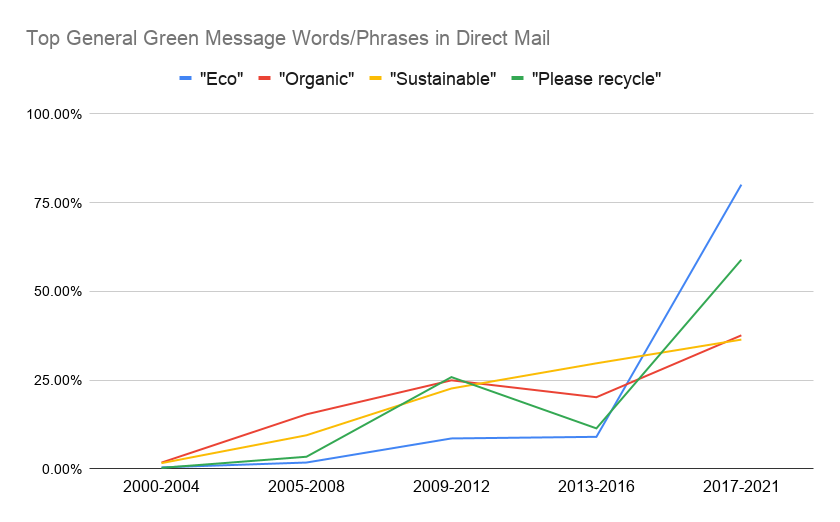
- “Organic” was used in 1.79% of all mail in 2000-2004; 37.64% of all mail pieces with this word was sent in 2017-2021
- “Sustainable” went from 1.64% in 2000-2004 to 36.44% in 2017-2021
- “Please recycle” grew the most, from 0.31% in 2000-2004 to 58.94% in 2017-2021
It should be noted that while these statistics show that “organic” and “sustainable” appear more now in direct mail, marketers use them in a variety of ways. And there are no exact definitions or guidelines on how they’re used.
Top Printing Practices Green Message Words/Phrases in Direct Mail
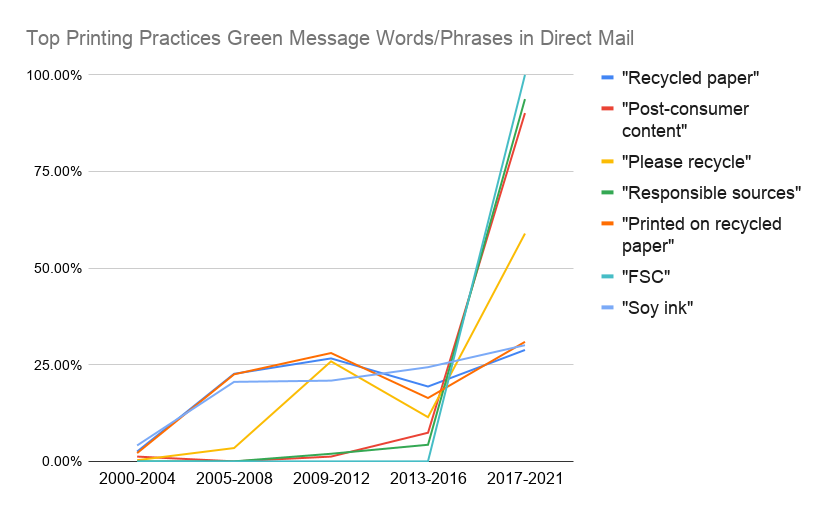
- “Recycled paper content” grew from 2.53% in 2000-2004 to 28.82% in 2017-2021
- “Printed on recycled paper” rose from 2.13% in 2000-2004 to 30.92% in 2017-2021
- “Soy ink” increased from 4.11% in 2000-2004 to 30.06% in 2017-2021
All of these phrases describe specific sustainable or green practices used in printing materials like direct mail. In the section above, we provided a few reasons for why brands increasingly want to not only change their practices but mention them. As they do so, it’s been creating a new mindset, which accelerates industry change.
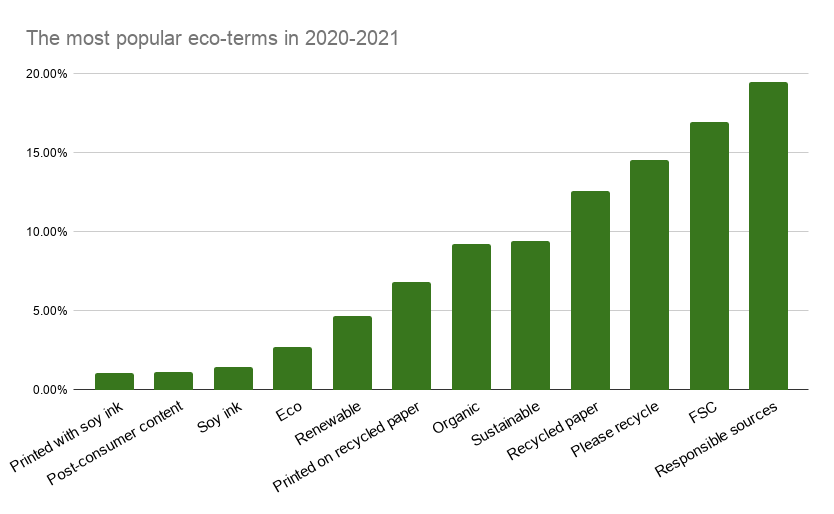
And in 2020-2021? The chart above shows that the most prominent eco words/phrases are:
- “Responsible sources” 19.51%
- “FSC” 16.96%
- “Please recycle” 14.52%
- “Recycled paper” 12.60%
- “Sustainable” 9.42%
In the next section, we’ll explain more about them, and how they’re popping up — by themselves or in combination — in certain industry categories.
“FSC” + “Responsible Sources”
As I mentioned before, we’ve heard a lot of misinformation about print, such as “Print is destroying our forests”, among others. The truth is that print is a renewable and recyclable resource.
“Responsible sources” refers to waste products, such as wood chips, sawmill scraps, and recycled paper (post-consumer waste) that are used in manufacturing of paper products, far more than what comes from forests.
“FSC” stands for Forest Stewardship Council. It’s a multinational industry group that sets standards for forest products (e.g, paper), independently certifies that these standards have been met, and labels qualified products. The mix or source of paper fibers — the chain of custody — determines which specific certification the company or mail piece receives.
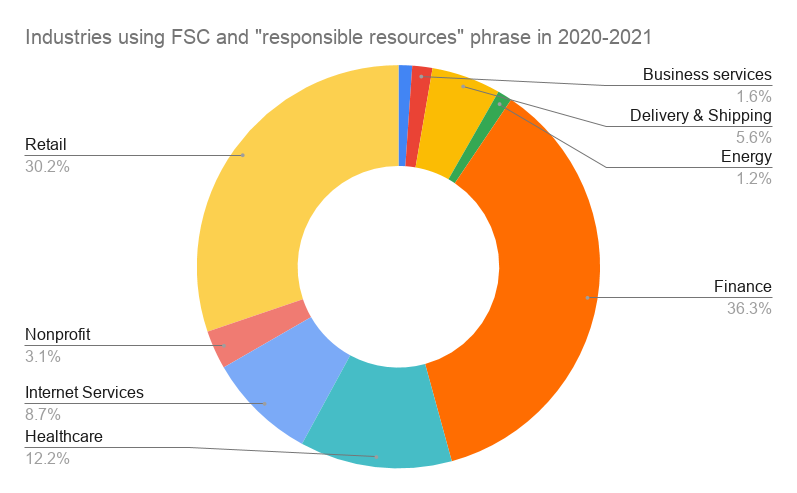
In 2020-2021, 36.29% of finance mailings use the “FSC” and “responsible sources” combination. Here’s an example of a March 2021 offer from American Express. The back of the outer envelope displays a logo for its FSC paper certification. Keep in mind that other components of the mail piece may be from other, non-FSC-certified sources.
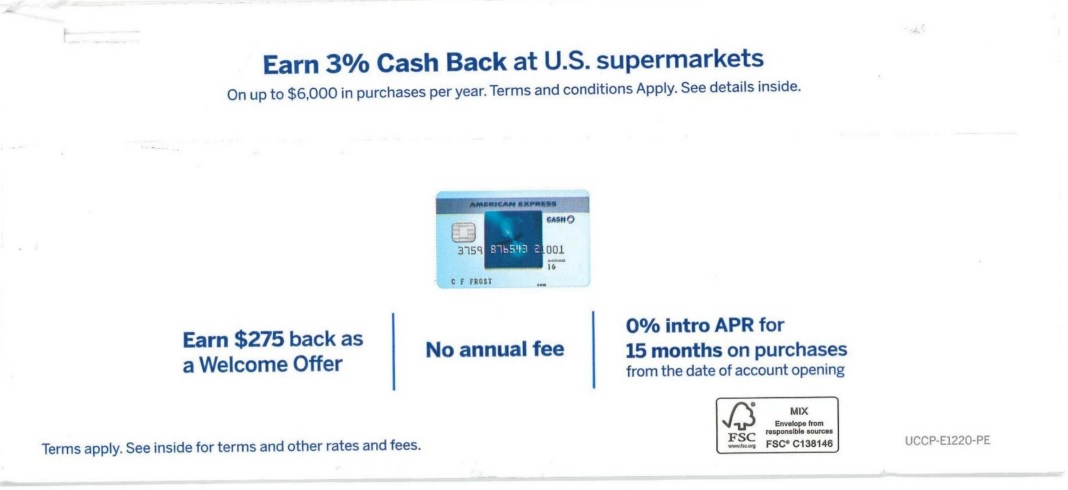
Other leading categories with this combination are Retail (30.21%), Healthcare (12.20%), and Internet Services (8.75%).
To find which companies use FSC, try our FREE Look Up tool. Simply enter the keyword and hit the search button.
“Please Recycle”
At some point, your customer will discard their mail piece. The question is: will they throw it in the trash? Or into a recycling bin? Be proactive by encouraging the latter.
According to our Who’s Mailing What! Statistics, 40.07% of finance mail carries this simple, polite request.
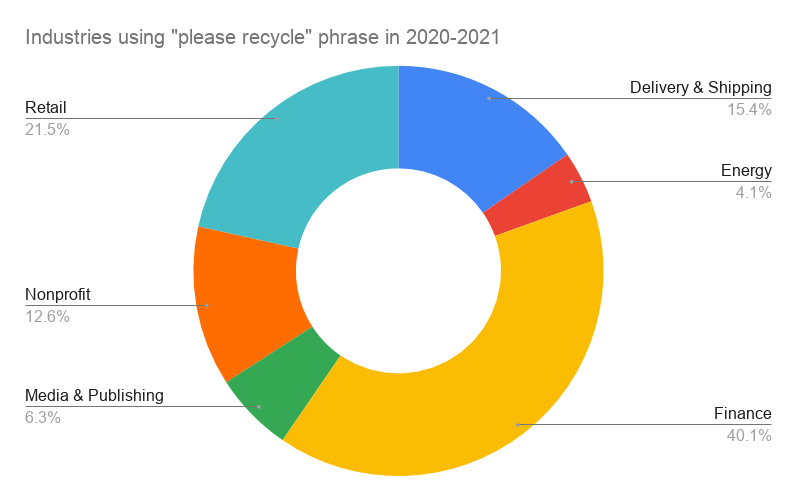
Other leading categories of mail with this phrase are Retail (21.52%), Delivery & Shipping (15.40%), and NonProfit (12.62%).
Only 6.31% of Media & Publishing mail has this phrase on it. Here’s an example of one, an envelope from the Wall Street Journal. You’ll also notice the EnviroSafe designation for the envelope’s biodegradable and recyclable window film.
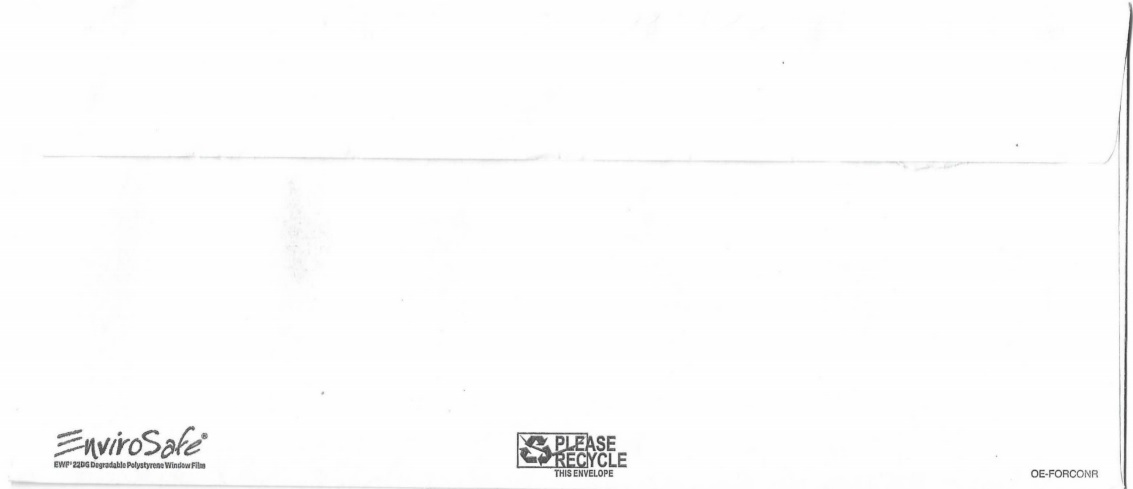
“Recycled Paper”
This phrase appears on a lot of mail, reflecting the growth of the sourcing paper from recycling streams. In 2020-2021, the industry category with the most extensive use of recycled paper is Nonprofits, at 62.99% of mail collected and analyzed by Who’s Mailing What!
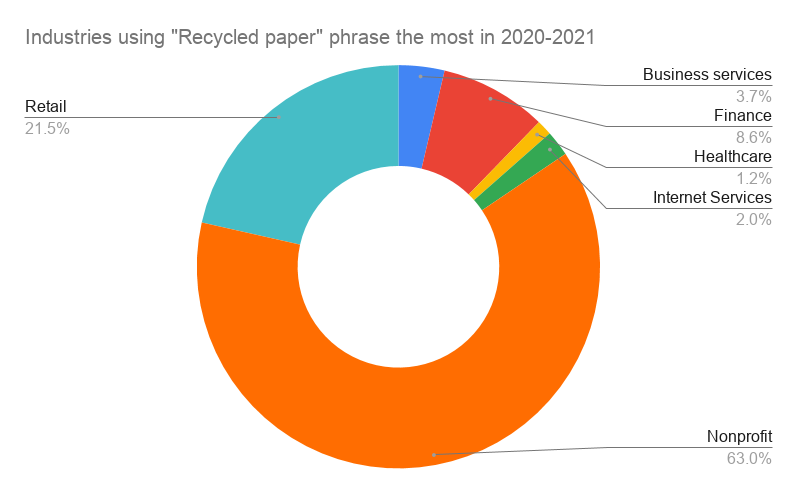
The example below is particularly fitting, coming from Greenpeace, a major environmental organization. This February 2021 business reply envelope (BRE) puts its notice on the flap. To account for the envelope’s off-white color, it adds that the recycled paper wasn’t bleached during the process — another consideration important to some donors in the group’s audience.
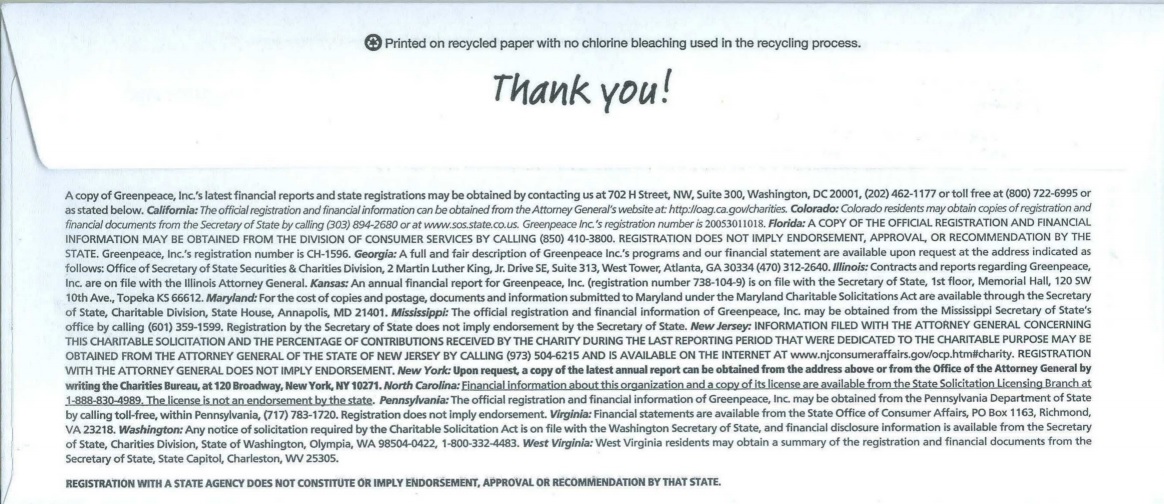
Other leaders in using this term are Retail (21.47%) and Finance (8.59%), matching the emphasis those industries place on environmental messages.
Recommended reading: 18 Direct Mail Marketing Trends for 2021
“Sustainable”
One way to define a sustainable product (or practice) is that across its life cycle, from manufacturing and use through to disposal, it should not cause permanent damage to the environment. It’s a fuzzy definition, leaving a lot of room for interpretation and balancing of costs and interests.
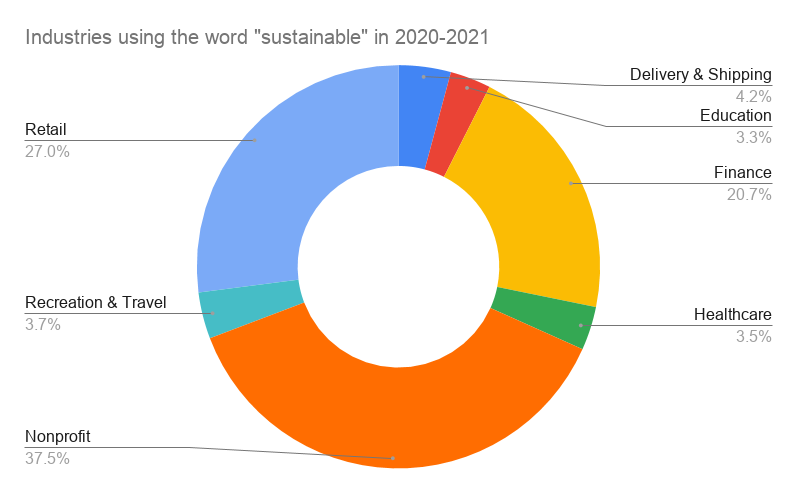
In mail, marketers, as well as fundraisers, use it often. In 2020-2021, 35.62% of mail from nonprofits included the term. It’s appeared in 25.66% of retail mail.
Here’s a March 2020 mail piece from Grove Collaborative, a natural household and personal care retailer. To introduce its products, this self-mailer showcases the company’s free “5-piece sustainable home set”, consisting of a reusable bag set, a glass hand soap dispenser, a walnut scrubbing sponge, silicone straws, and a hand soap pouch.
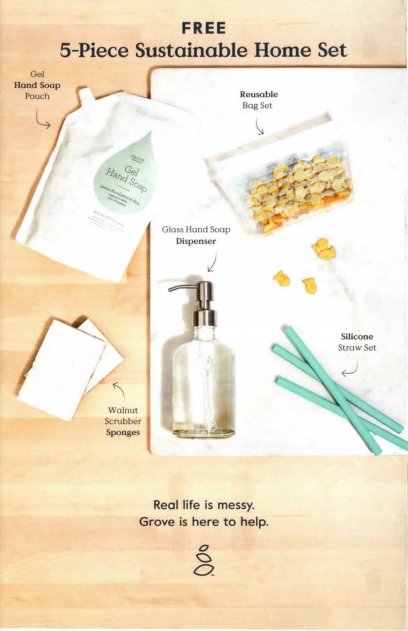
Inside panels describe how the company “essentials” are cruelty-free, include some plant-based and non-synthetic ingredients,use less plastic, and are carbon-neutral.
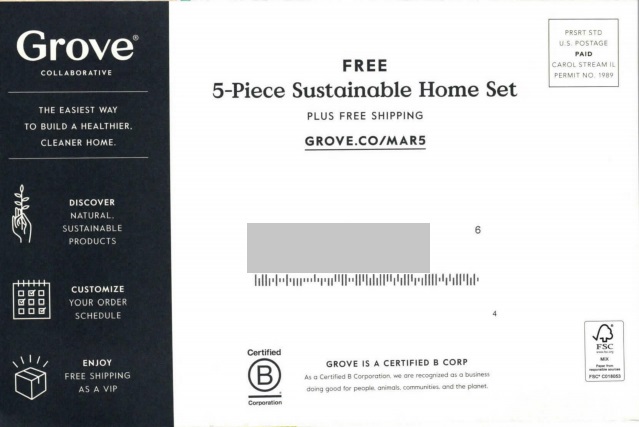
The back panel carries 2 important designations. One certification is from B Lab, recognizing Grove as a B Corporation for its people-, community-, and Earth-friendly policies.
The other certification is from FSC. As we’ve already seen (see above), it’s used to describe the responsible paper mix in the mail piece.
And speaking of certification, Sustainable Forestry Initiative offers a separate approach to forest management that is reflected on some direct mail pieces, as on this March 2021 campaign from SalonCentric.
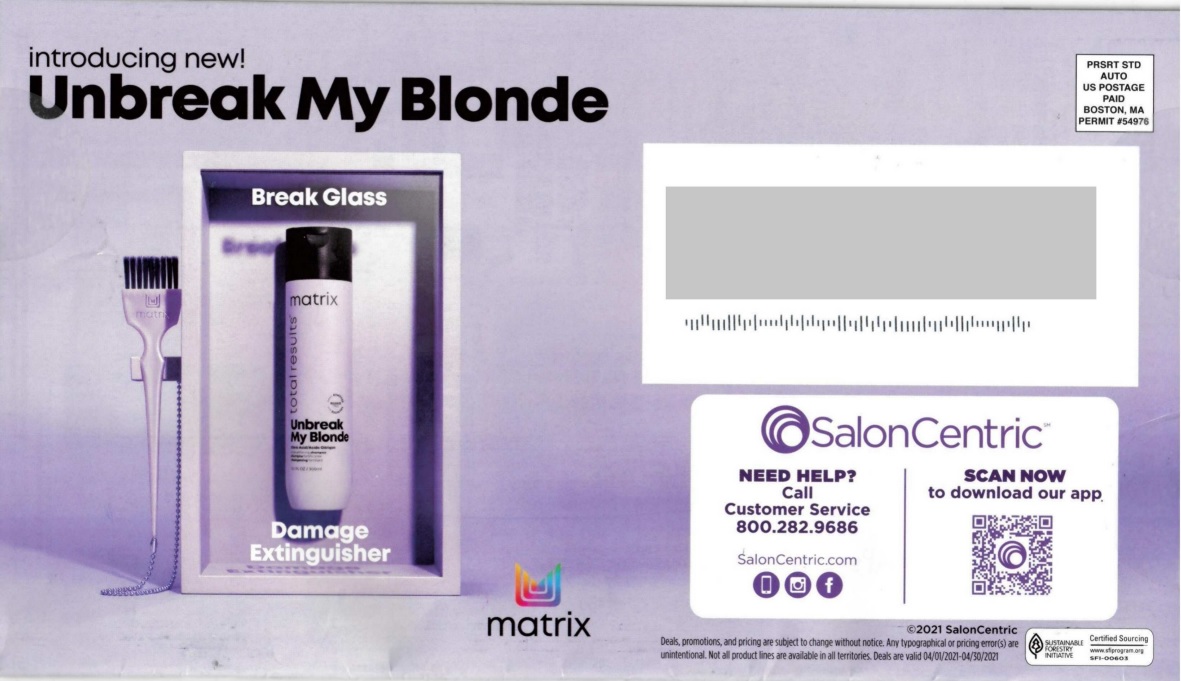
“Organic”
This term’s popularity has also increased over the years. And in 2020-2021, according to our figures, retail is by far the biggest user of the word at 69.85% of mail, whether it’s describing food, vitamin ingredients, linens, gardening seeds, home and roof cleaning, pest control, spa services, or apparel. 14.51% of “organic” mail is in healthcare, while nonprofits make up 6.35%.
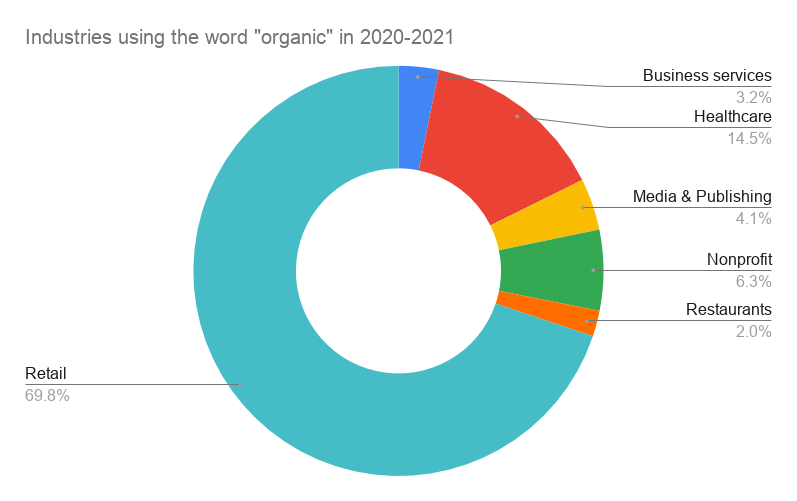
Most of the time, it appears as just one of many ways to describe a product or service. But here’s an exception. Natural Grocers, a health food store chain, makes a point of setting itself apart from its competition in the grocery world. “We know our customers want to shop for produce without worrying if it is organic or not” reads this postcard. An image is captioned “100% organic produce” and includes a USDA Organic seal; to use the logo, required organic program specifications must be met.
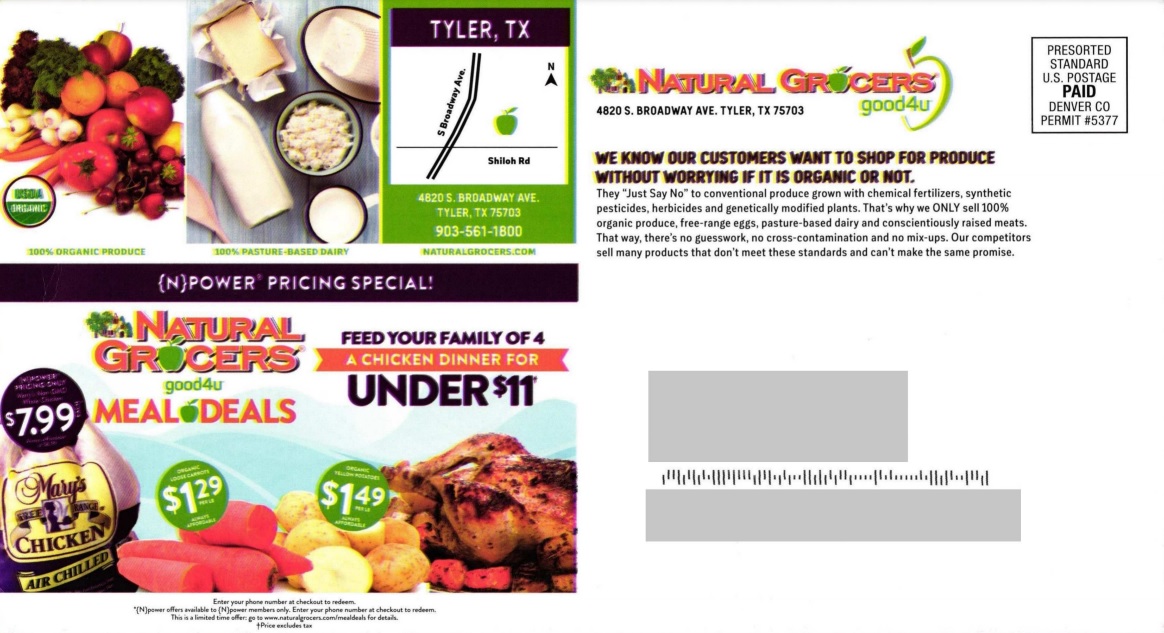
Final Thoughts
Creating sustainable direct mail isn’t easy, at least at first. Fortunately, there are plenty of resources to help you choose the papers, envelope windows, ink, printing processes, and formats that best align with your ecological values.
For example:
Forest Stewardship Council (FSC)
Sustained Forestry Initiative (SFI)
Both provide information on certifying chain of custody for the stages of paper processing.
Also, the U.S. Federal Trade Commission provides some guidelines on environmental or green marketing claims.
Another important step to consider is your data hygiene procedures. Forty percent of the success of your direct mail is due to your list data. Sending mail that can’t be delivered properly wastes money (for postage and printing) but also wastes paper and ink. Use CASS (Coding Accuracy Support System) and NCOA (National Change of Address) — as well as other tools — to have the cleanest data possible.
In a world where growing population, shrinking resources, and other environmental issues seem to provide challenges, it’s important to educate consumers about how mail can still be a responsible and sustainable choice for marketing communications.








